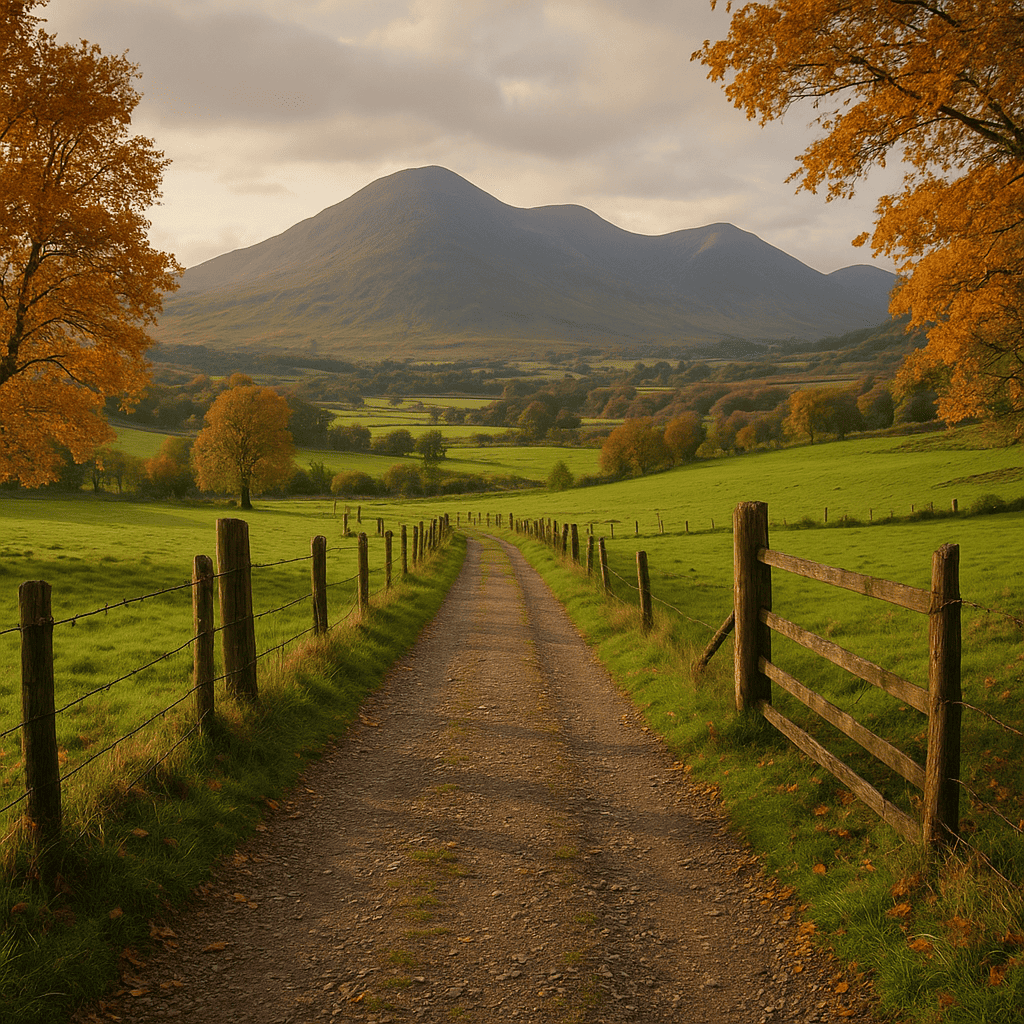
What the 266 Acres Contain
According to the official listing:
- About 115 acres of commercial forestry, with an approved felling licence already in place.
- Roughly 151 acres of grazing land, suitable for livestock or mixed-use farming.
- An intact two-storey stone farmhouse, structurally sound but in need of restoration.
Crucially, the Kerry Way walking route crosses directly through these lands — turning this property from a mere agricultural asset into a potential hub for sustainable tourism and rural enterprise.
Who Owns It — and Why Sell Now
The owner’s name has not been made public. The sale is listed by private treaty, meaning negotiations are conducted directly between seller and buyer rather than by open auction.
However, the property is registered under Folio KY30426 in the Irish Land Registry (Tailte Éireann), making ownership information accessible through landdirect.ie.
For a small fee, the folio reveals the titleholder, boundary maps, and any charges or rights of way — details that often tell the deeper story behind Irish land sales.
Experts note that such listings typically arise when family holdings are being restructured, or when large tracts of mixed land become harder to maintain under changing agricultural conditions.
Given the combination of forestry, pasture, and trail access, this sale could mark a shift from traditional farming to eco-tourism or multi-use rural development.
What It Could Mean for the Region
Kerry has always lived on two things — land and beauty.
Each major land sale here echoes far beyond property pages.
Potential benefits include:
- Local employment through forestry management, renovation works, and small-scale tourism projects.
- Microbusiness growth: cafés, artisan markets, and guided walking tours along the Kerry Way.
- Landscape conservation: if the new owner embraces sustainable practices, the site could balance heritage with innovation.
The Kerry County Development Plan 2022–2028 explicitly protects traditional rights of way and walking routes like the Kerry Way, ensuring public access remains preserved.
Any development proposal will therefore need to align with these principles — safeguarding the spirit of the trail even as new investment arrives.
Voices from the Community
Among locals, the mood is cautiously hopeful.
“The main thing is that the land stays alive,” says Michael Fitzpatrick, a third-generation farmer from Killorglin. “Not fenced off with Private Property signs everywhere.”
Others dream of a revival — a restored farmhouse, renewed forestry, and a project that brings energy back to the glen without sacrificing its wildness.
The Price of Paradise
At €550,000 for 266 acres, that’s just about €2,000 per acre — a modest price for what some would call a slice of paradise.
Interest is already strong: by early October, Spillane & Co. had received numerous inquiries from individual buyers and eco-development firms looking for sustainable ventures in Kerry.
If the sale succeeds, Derrynafeana might stand as an example of how old Irish soil — once shaped only by weather and work — can find a new life without losing its soul.
